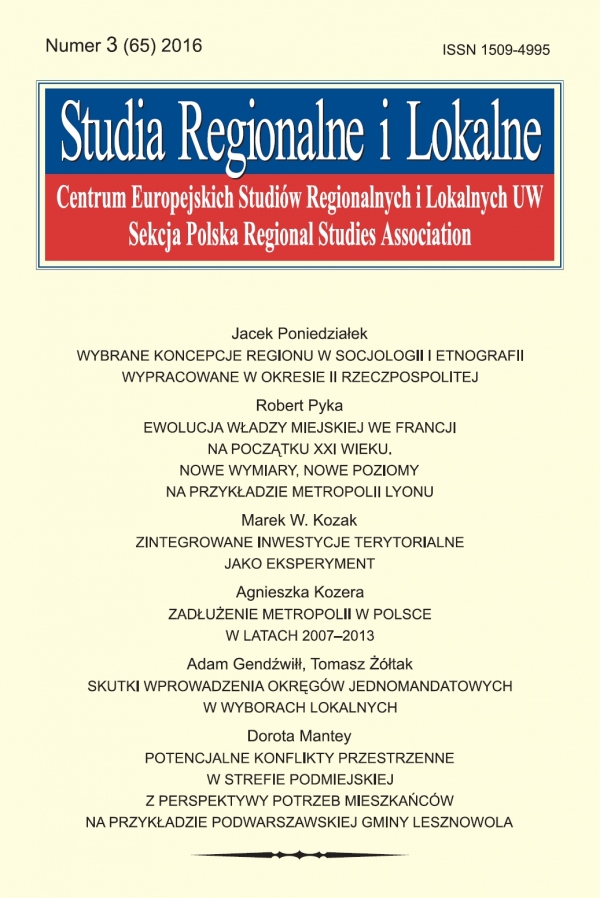Issue:
3(65)/2016
Dorota Mantey
Potential spatial conflcts in the suburban zone from the perspective of residents’ needs (on the example of Lesznowola, Warsaw metropolitan area)
DOI: 10.7366/1509499536506
Potencjalne konflikty przestrzenne w strefie podmiejskiej z perspektywy potrzeb mieszkańców na przykładzie podwarszawskiej gminy Lesznowola
Celem artykułu jest identyfikacja odmiennych wizji i oczekiwań mieszkańców oraz samorządu lokalnego odnośnie do zagospodarowania przestrzeni podmiejskiej, które stanowią źródło potencjalnych konfliktów przestrzennych. Zaprezentowano w nim sprzeczności interesów ogółu mieszkańców strefy podmiejskiej, określonych grup mieszkańców, a także samorządu gminnego. W artykule scharakteryzowano różne rodzaje konfliktów, w tym konflikty przestrzenne. Źródłem konfliktów jest chęć utrzymania przez ogół mieszkańców podmiejskiego charakteru miejscowości zamieszkania, nadrzędność prawa własności i interesu indywidualnego nad interesem zbiorowym oraz nadmierne ambicje rozwojowe samorządów gminnych. Rozważania na temat konfliktów przestrzennych w strefie podmiejskiej ilustrują wyniki dwóch badań ankietowych zrealizowanych w podwarszawskiej gminie Lesznowola, jedno na reprezentatywnej próbie mieszkańców całej gminy (394 osoby), a drugie na reprezentatywnej próbie mieszkańców Mysiadła (305 osób).
Potential spatial conflcts in the suburban zone from the perspective of residents’ needs (on the example of Lesznowola, Warsaw metropolitan area)
The aim of the paper is to identify different visions and expectations of the citizens and the local government regarding the development of their suburban space, which are a source of potential spatial conflicts. It discusses contradictory interests of all the people living in the suburban area, certain groups of inhabitants, and local authorities. The paper characterizes different types of conflicts, including spatial ones. The conflicts in the suburbs are generated by a desire to keep the suburban character of the place of residence, the primacy of property rights and individual interests over collective ones, and excessive development ambitions of local authorities. Considerations on spatial conflicts in a suburban zone are illustrated by the results of two surveys carried out in the Lesznowola municipality near Warsaw, one on a representative sample of residents throughout the whole municipality (394 persons), and the other on a representative sample of residents of Mysiadło (305 people).
Affiliation:
Dorota Mantey: Uniwersytet Warszawski, Wydział Geografii i Studiów Regionalnych, ul. Krakowskie Przedmieście 30, 00-927 Warszawa;
d.mantey@uw.edu.pl 


